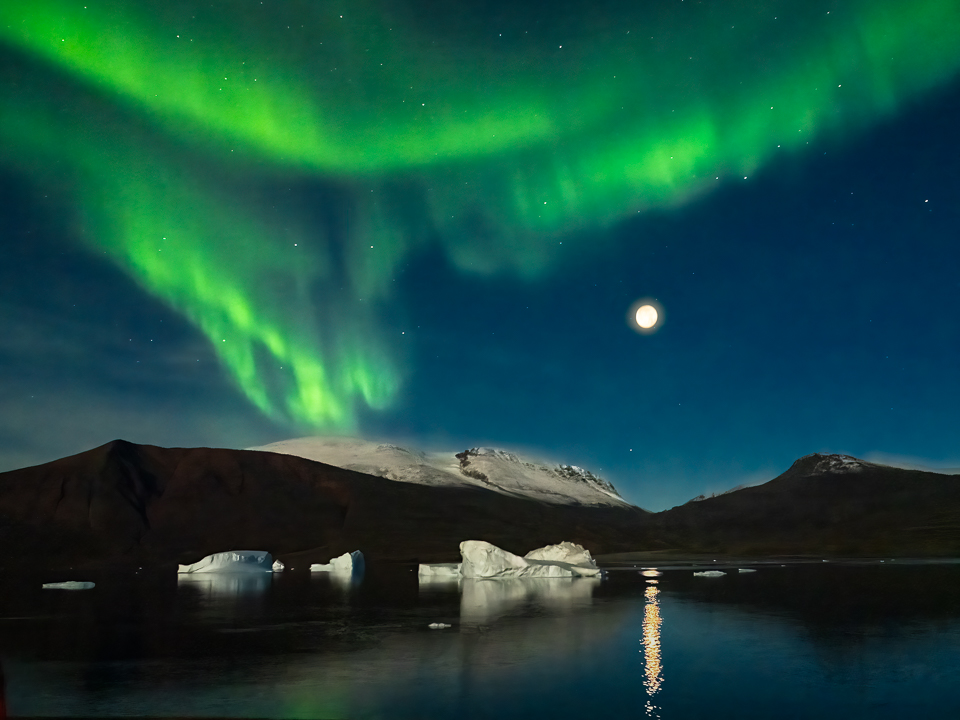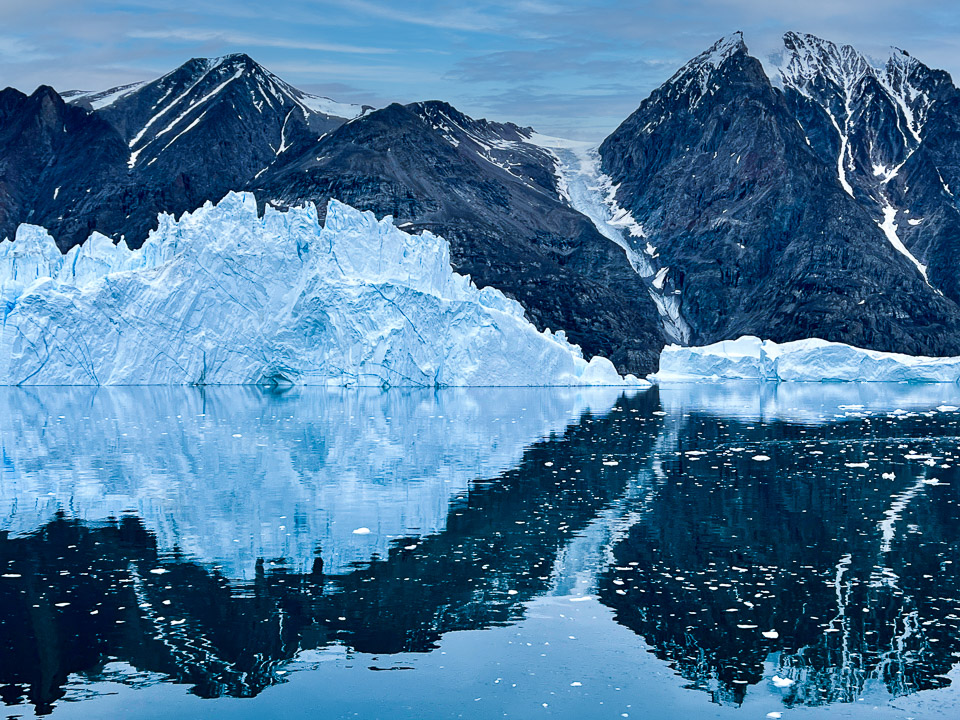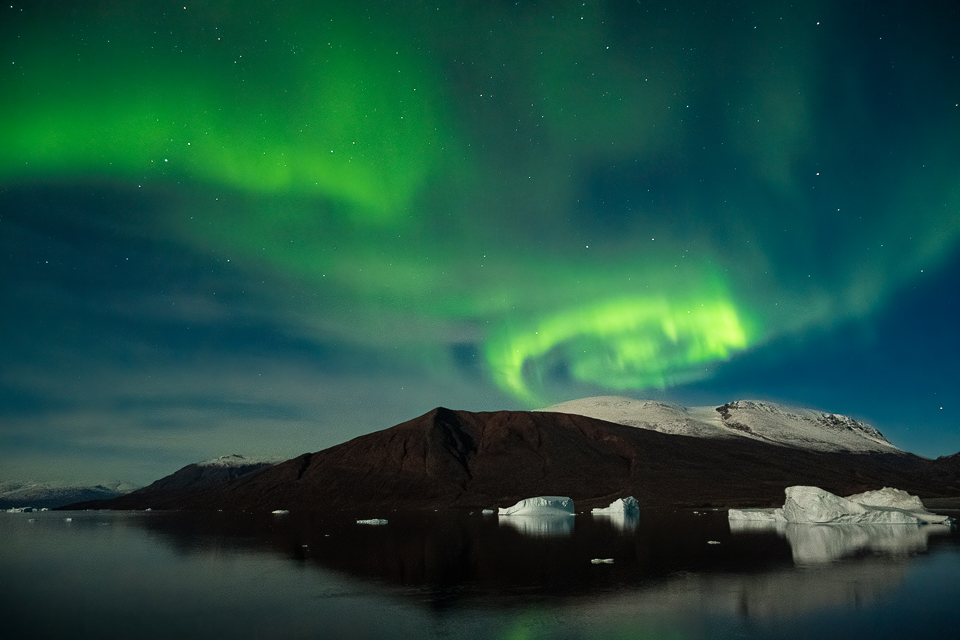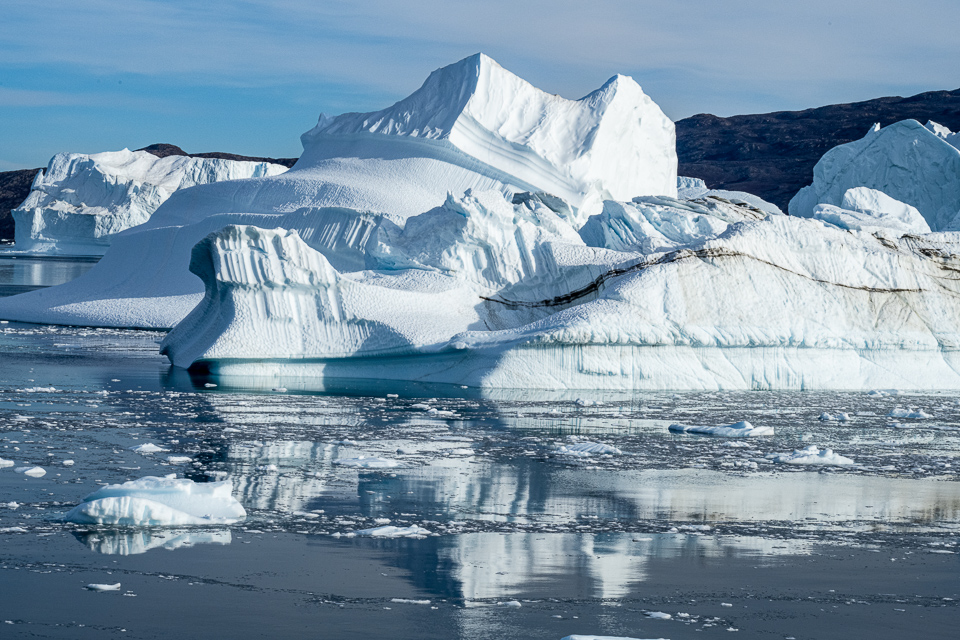
A full moon rising above snowy peaks illuminated the icebergs and dark water in front of us. In the sky, the Northern Lights formed ever-changing patterns—swirls, streaks, circles, corkscrews and arcs, all in vivid color.
We were in East Greenland’s Scoresby Sound, the largest fjord system in the world. An extension of the Greenland Sea, it stretches nearly 70 miles inland from the coast, branching into ever-smaller fjords. Fjords are made when a glacier cuts a deep canyon through tall mountains over thousands of years. As the ice melts over time, seawater fills up the valley. Voila a fjord!

We’d heard about this region’s special beauty during our trip to Greenland’s west coast in 2008.
Finally, in September 2022, we had an opportunity to take a 10-day cruise to Greenland’s east coast. The timing was perfect. At this time of year, the waters are largely free of pack ice, which could make such a trip treacherous, if not impossible. And we would likely see the Northern Lights, visible from late August through early April.

East Greenland is remote and more sparsely populated than Greenland’s more frequently visited west coast. It’s a land of soaring mountains, colossal glaciers and countless outcroppings of giant icebergs, carved into surreal shapes by wind and water. We observed the entire drama from our ship and from the small Zodiac inflatables that ferried us ashore for daily hikes across the snow and ice.

Although the entire island of Greenland, the largest island in the world that is not a continent, has a population of 56,000, only 3,000 indigenous Inuit live on or near the long eastern coastline. They hunt seals, walruses, narwhals, polar bears and Arctic foxes (for their own use and to trade), and they also fish. Greenland’s waters are known to contain more than 250 species of fish: Arctic char, Atlantic Salmon and Arctic cod, to name a few. Moreover, global warming is causing other species such as mackerel, monkfish and porbeagle to migrate there.

The Inuit, however, fear that climate change will cause their traditional way of life to disappear. Dogsled teams must cross stretches of sea ice to travel and hunt. But less ice and shorter freezing seasons mean that hunters have less time and smaller areas for hunting. As a result, they’re being forced to spend more time fishing, an occupation which is less profitable and claims a lower status.
The melting of Greenland’s ice cap, the second largest in the world, also presents a serious threat to coastal communities as sea levels rise. If a major portion of the ice cap breaks away, quite possibly without warning, the impact on coastal communities wordwide could be cataclysmic.
To make matters worse, thinner ice means easier access to Greenland’s underground minerals, including fossil fuels. Local and foreign multi-national companies have competed vigorously for the rights to extract these minerals. Greenland—a territory of the Kingdom of Denmark— has readily granted mining concessions, driven by the need to generate income, provide job opportunities for Inuit and achieve greater economic independence from Denmark. But there might be unintended consequences: The mining of fossil fuels exacerbates global warming which, in turn, accelerates the melting of more and more ice, all of which creates what environmentalists call a “negative feedback loop.”

On our cruise, it was obvious that many glaciers around us were in retreat. But we tried to avoid dwelling on the negative and focused instead on the extraordinary beauty around us: pristine landscapes and the animals—musk ox, Arctic fox, whale and seals—that we occasionally spotted.
Sadly, future generations are not likely to see, as we just did, the Arctic in these better days.
To arrange a cruise to East Greenland, check out these two companies — Poseidon Expeditions and Hurtigruten Expeditions — both leaders in Arctic exploration.
